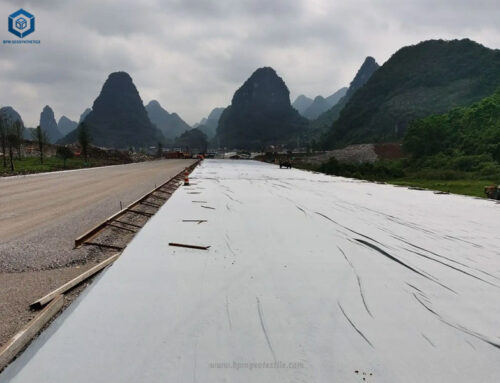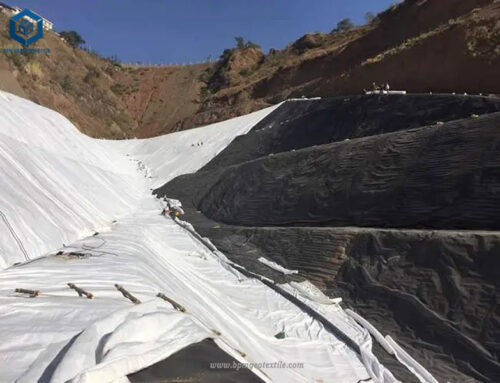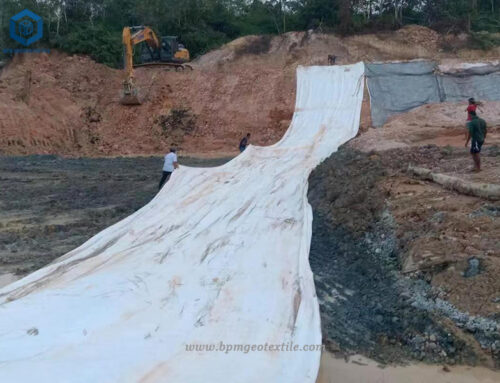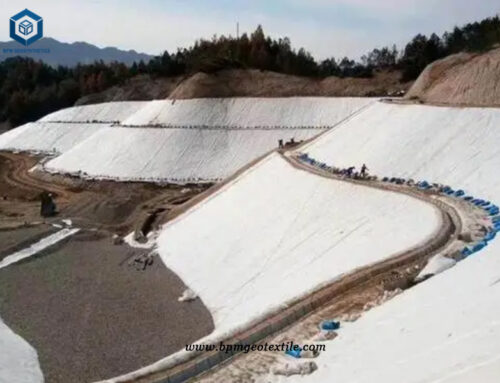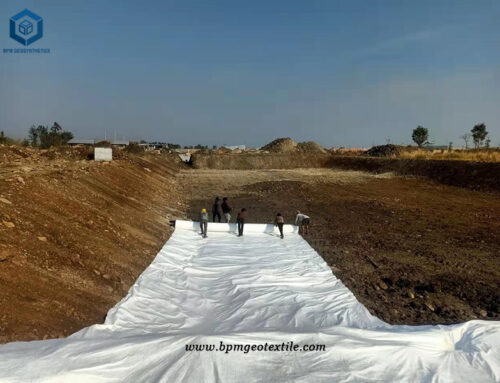Filament geo fabric is made from high-quality continuous polypropylene fibers by the method of forming and consolidating polyester filaments.The fibers of the filament geotextile fabric are arranged into a three-dimensional structure. This continuous material is a new type of building material for geotechnical and civil engineering applications. It is widely recognized as the choice for drainage applications, pavement interlayers, and stabilization beneath paved and unpaved roads. The fabric has good stretch, puncture resistance, and other effects. Additionally, it has high acid and alkali resistance, aging resistance, and other effects. Filament geotextile fabric is widely used for separation, filtration, drainage, and protection functions in civil engineering projects.
1. What Is Filament Geo Fabric?
Filament geotextile fabric, a robust material composed of continuous synthetic filaments like polyester or polypropylene, stands out in civil engineering. These strong fibers are bonded through extrusion, creating a resilient fabric. Its exceptional tensile strength and stability make it ideal for various construction uses.
Primarily, this fabric stabilizes soil, controls erosion, filters, drains, and separates elements in projects. Its high durability and UV resistance ensure longevity even in harsh conditions. Depending on the project’s demands, different specifications and grades of the fabric are available.
The properties of this fabric can change based on the type of synthetic material used, its weight, thickness, and how it was manufactured. This adaptability allows engineers to select the best option for their specific needs.
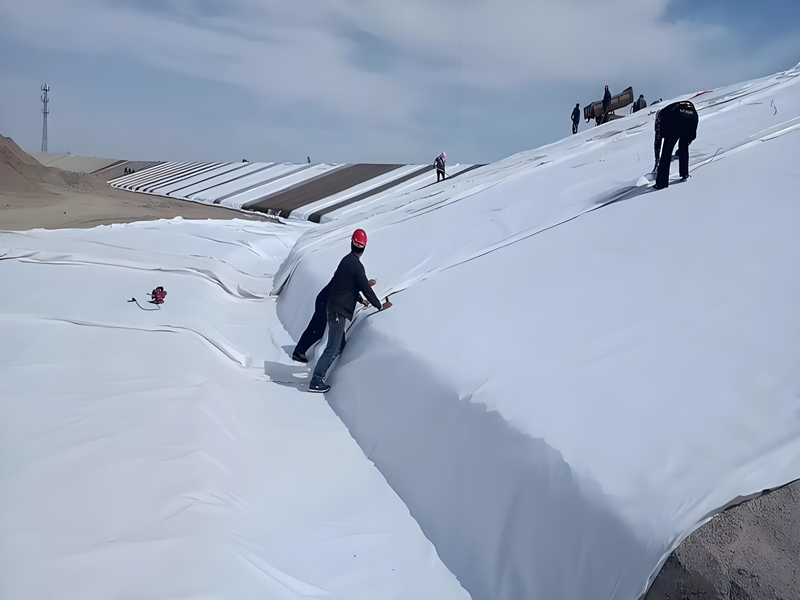
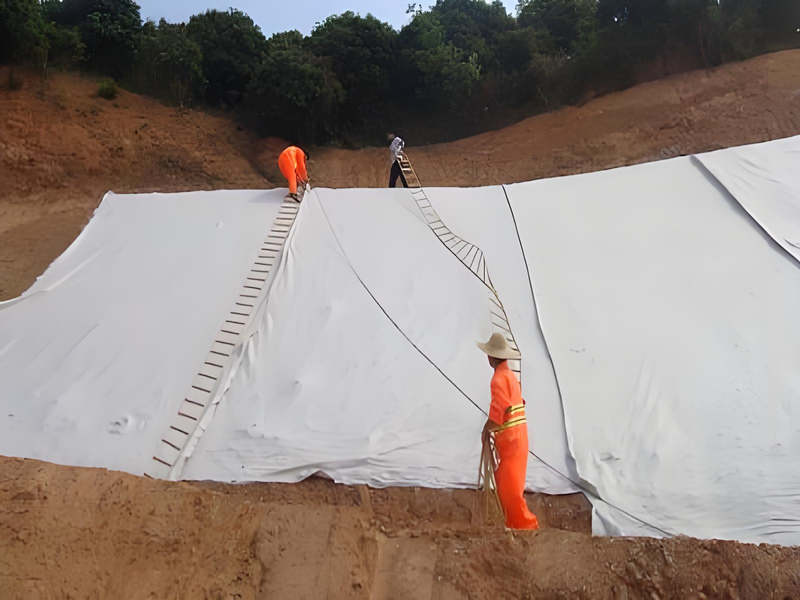
2. What Is Filament Geo Fabric Used for?
Filament geotextile fabric is extensively used in civil engineering and construction projects for a variety of purposes. Here are some common applications of filament geotextile fabric:
2.1 Soil Stabilization
Filament geotextile fabric is employed to reinforce and stabilize soil, preventing erosion and maintaining the integrity of the ground. It is widely used in road construction, embankments, and retaining walls.
2.2 Erosion Control
Filament geotextile fabric acts as a protective layer, effectively controlling soil erosion by preventing the washout of sediment caused by water flow. It is applied in slopes, riverbanks, shorelines, and other erosion-prone areas.
2.3 Filtration
Filament geotextile fabric serves as a filter, allowing water to pass through while retaining fine particles. It finds application in drainage systems, subsurface drains, and beneath retaining walls to prevent clogging and ensure efficient water flow.
2.4 Drainage
Filament geotextile fabric facilitates proper drainage by allowing water to pass through while preventing the movement of soil particles. It is utilized in various applications such as subsurface drainage systems, French drains, and road construction to manage water effectively.
2.5 Separation
Filament geotextile fabric is used for separating different soil layers or materials with distinct properties. It prevents the mixing of materials like aggregate and soil, maintaining their individual performance and stability.
2.6 Reinforcement
Filament geotextile fabric provides reinforcement to structural elements such as roads, railway tracks, and foundations. By improving load-bearing capacity and stability, it helps reduce the risk of deformation and failure.
3. What Are Benefits of Filament Geo Fabric for Highway Embankment Reinforcement Project?
Filament geotextile fabric provides several advantages for highway embankment reinforcement projects. Here are some key benefits:
3.1 Enhanced Soil Stability
Filament geotextile fabric reinforces the soil in highway embankments, increasing its stability. By preventing soil movement, it reduces the risk of slope failure and settlement, ensuring the long-term integrity of the embankment structure.
3.2 Erosion Prevention
Highway embankments are susceptible to erosion caused by weather conditions and water runoff. Filament geotextile fabric acts as a protective barrier, shielding the soil from erosion and preserving the embankment’s stability and shape. This minimizes the need for frequent maintenance and repairs.
3.3 Load Distribution
By distributing the load from traffic and other loads across a wider area, filament geotextile fabric reduces stress on the soil. This improves the embankment’s load-bearing capacity, mitigating settlement and deformation issues.
3.4 Improved Drainage
Filament geotextile fabric allows water to pass through while preventing soil particles from moving. This enhances the embankment’s drainage system, facilitating efficient water flow and preventing soil softening caused by water accumulation.
3.5 Construction Efficiency
Filament geotextile fabric is lightweight, flexible, and easy to handle and install. Its ease of use saves construction time and reduces labor costs. It can be quickly deployed, providing immediate reinforcement to the embankment during construction.
3.6 Long-Term Performance
With its durability and resistance to UV degradation, chemicals, and biological factors, filament geotextile fabric maintains its strength and performance over time. This ensures the embankment’s long-term stability and functionality, reducing the need for frequent maintenance.
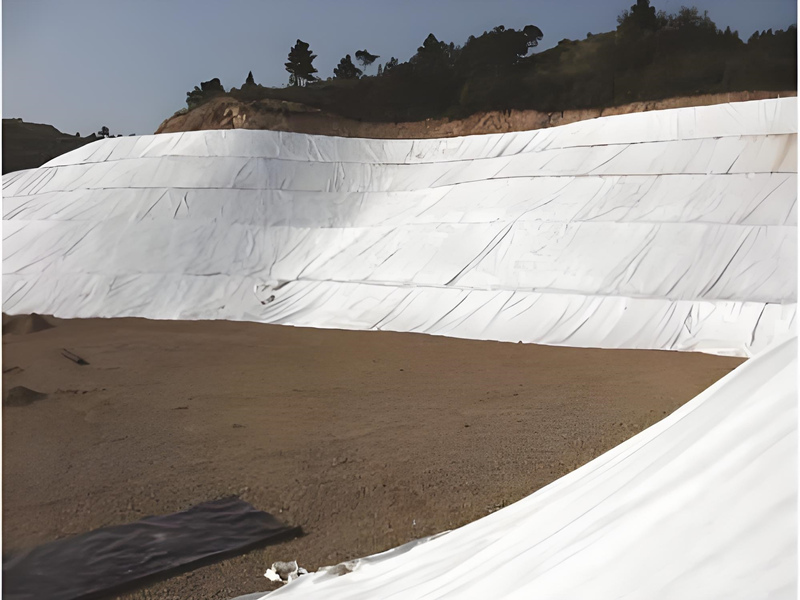
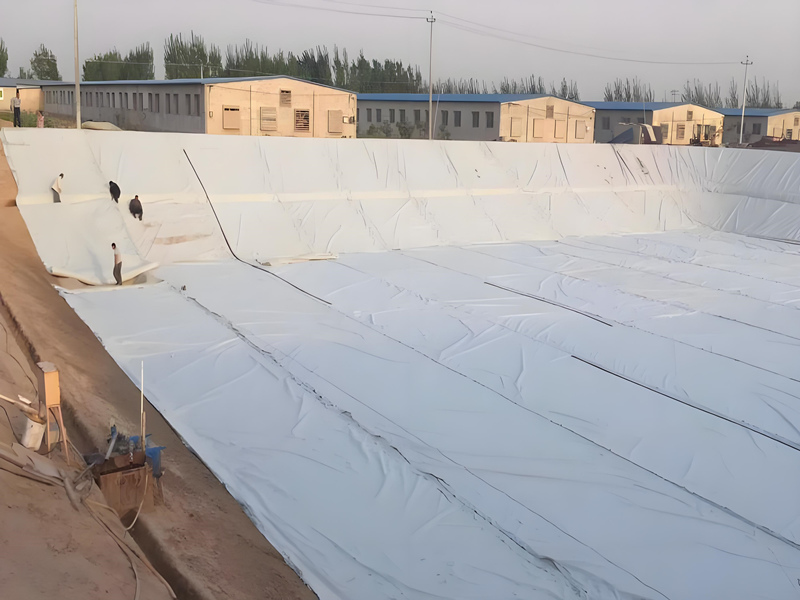
4. Case Study of Filament Geo Fabric Material for Highway Embankment Reinforcement Project
In West Bend, South Wisconsin, a U.S. highway with a notorious safety record is set for improvement by the Wisconsin Department of Transportation (WDOT). Their plan involves constructing a four-lane bypass skirting the city’s edge, traversing near Mud Lake—renowned for its glacial features and vital peat resources.
To address stability concerns, BPM Company proposed using non-woven geotextile fabric to reinforce the embankment. By installing a high-tensile-strength geotextile layer at the base, the fabric enhances shear strength, thereby boosting embankment stability. This addition also theoretically imparts extra rigidity, ensuring more even load distribution across the embankment. Furthermore, the filament geo fabric reduces shear stress between the embankment and subgrade, mitigating the risk of lateral spreading on weak grounds.
Engaging with American clients and local technicians, discussions confirmed our solution’s potential to tackle their challenges head-on. Consequently, we dispatched samples of 200g, 300g, and 400g filament geotextile fabrics for evaluation. Following rigorous inspections, the 300g non-woven variant was selected for the roadbed reinforcement endeavor. The successful collaboration left customers highly content, underscoring the effectiveness of our tailored approach.
5. Summary
The filament non-woven geotextile fabric stands out as a high-performance material in the geotextile industry. It excels in providing isolation, filtration, drainage, separation, protection, and maintenance functions. This remarkable fabric is crafted through a meticulous process involving the extrusion of fibers. These fibers are carefully laid onto a manufacturing “bed,” where they undergo a needle-punching procedure from both the top and bottom. This process entangles the fibers, resulting in a dimensionally stable geotextile product.
Filament geo fabric material has gained widespread popularity across various sectors due to its exceptional properties. For instance, it plays a crucial role in road construction, ensuring durability and stability. Additionally, it finds applications in landfill sites, where it helps manage waste effectively while preventing contamination. Its versatility extends to canal projects, where it aids in efficient water management and soil stabilization. Furthermore, salt pond environments benefit from its use, as it helps control salinity levels and protects the surrounding ecosystem.
In conclusion, filament non-woven geotextile fabric proves to be an indispensable asset in numerous construction and environmental management projects. Its multifaceted capabilities make it a preferred choice for professionals seeking reliable and long-lasting solutions.
BPM manufactures and wholesales many types of effective and states of the art geotextile, geomembrane, and other geosynthetics to over 100 countries.
BPM Geotextile is not only manufacturing best quality geosynthetic products but also providing professional design and installation service. OEM, ODM, custom development and fabrication are also available.

